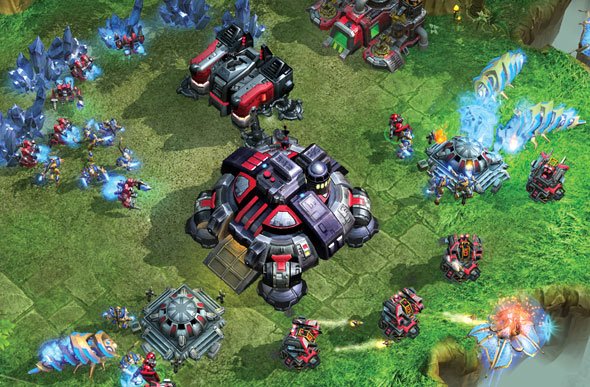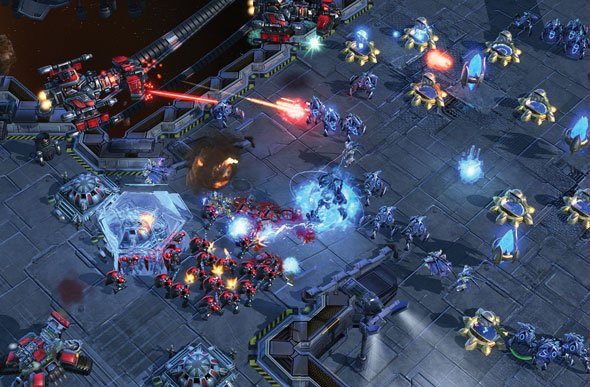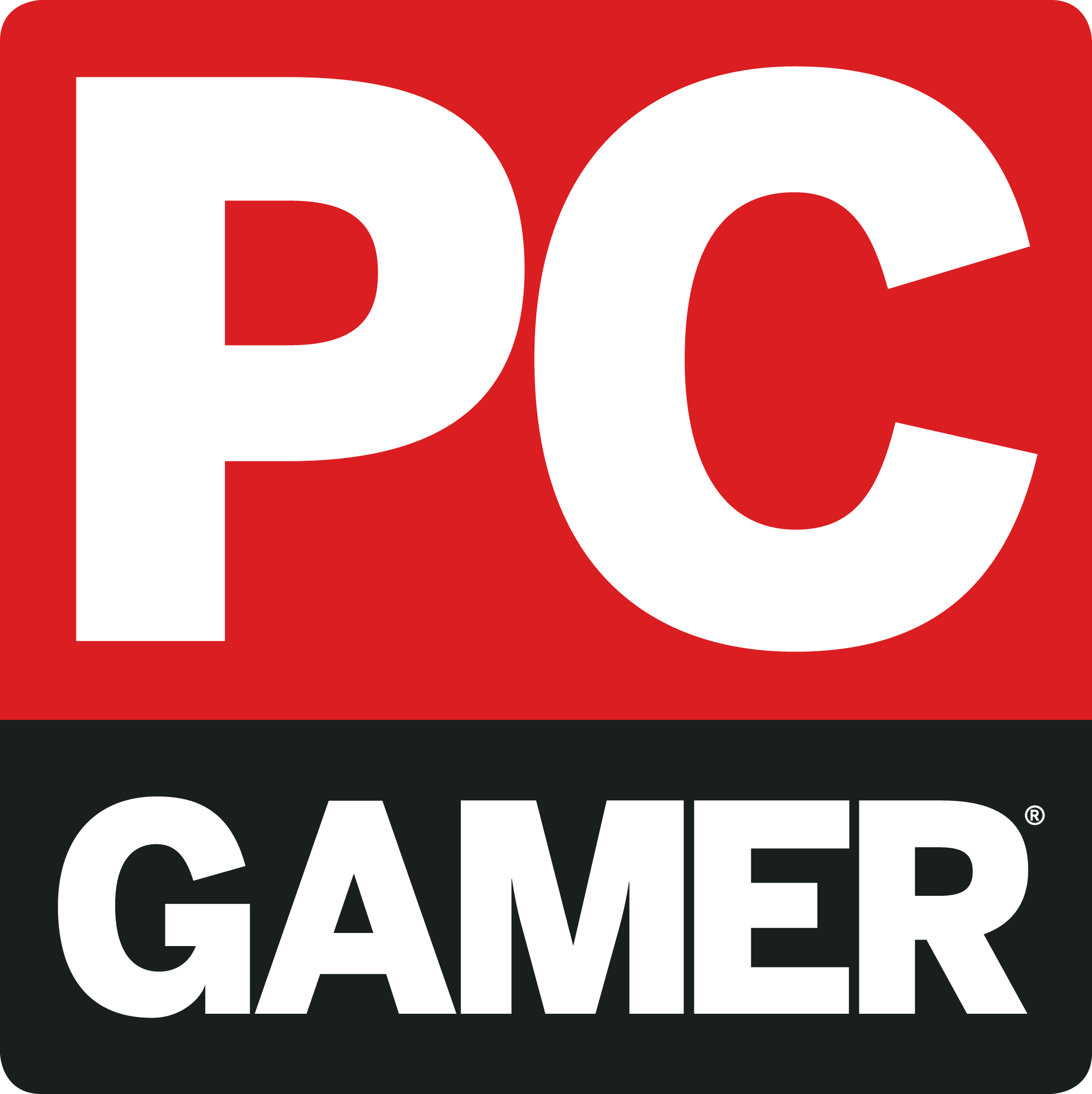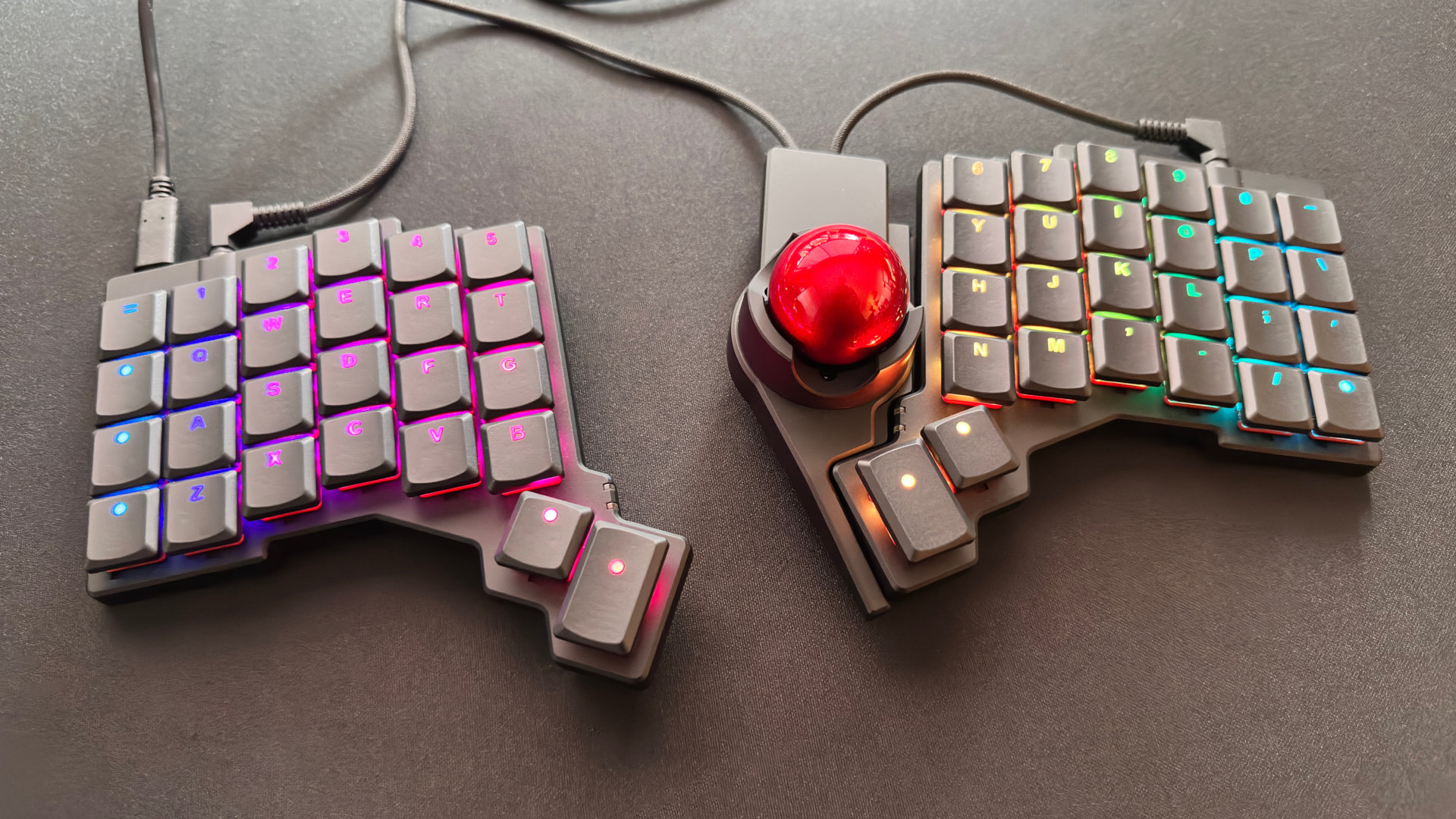
RTS crafters
So, what took them so long? It was getting to the point where even the faithful were wondering whether the second coming of StarCraft would happen during their lifetime. But there's
actually a pretty simple reason, and it's the same reason that Blizzard's games are consistently of the same high quality: Behind all four of its hugely popular real-time strategy games and their expansions, there is just one team of elite developers. What's more, it's a shockingly small group of just 39 people—other major RTS development teams have been known to grow to three times that size—and that headcount contains a high percentage of the same talent-rich brain matter that created StarCraft, SC: Brood War, Warcraft III: Reign of Chaos, and WCIII: Frozen Throne. The group also includes the exact same art team that produced some of the most amazing and memorable 2D game art ever. The team began throwing around design concepts shortly after production ended on Frozen Throne, but began the real journey to bring StarCraft into the 21st century two years ago, right after Blizzard's company-wide crunch to launch World of Warcraft finally subsided.
That's also when Blizzard hired Dustin Browder—who helped create Command & Conquer: Red Alert 2, C&C: Generals, and Battle for Middle-earth—as the game's lead designer. While the shoes of the original StarCraft designers, such as producer Bill Roper, founder of Flagship Studios (Hellgate: London), and campaign editor creator Jeff Strain, founder of ArenaNet (Guild Wars 2), are nigh-impossible to fill, Browder definitely has the proper reverence and respect for the source material. “[StarCraft] is such a great game that we really don't want to mess that up,” he explains. “We have such a huge responsibility now, as a developer and as enthusiasts for this game, to get it right, to hit the mark and give everybody something that really feels like, 'Ah yes! This is the game I wanted this whole time!'”
Browder points out that when making a sequel to one of the all-time greats of gaming history, it's just as important to consider what you're going to keep the same as what you're going to do that's new. “We've seen a lot of really cool stuff [in the RTS genre] in the last five or six years, but in this case, we're just looking back at the original StarCraft for a lot of our core inspiration, and some other Blizzard titles as well.” So, while you can be sure you'll see a lot of new tricks on the next few pages, the team is going to great lengths to ensure that what makes StarCraft so definitively StarCraft isn't lost in the transition.

Four's a crowd
For example, one of the biggest potential changes was quashed right away: StarCraft II will not be adding a fourth faction. This news will come as something of a surprise to many fans, considering that Blizzard once revolutionized the RTS genre by introducing three sides in StarCraft, a move that was hailed as a huge leap forward in game design and balancing.
Keep up to date with the most important stories and the best deals, as picked by the PC Gamer team.
On the other hand, limiting StarCraft II to three races makes a lot of sense. In the years since the first game's release, the “race race” has escalated to laughable proportions, with games tacking on extra races simply because they can. Even Blizzard added the Night Elves and the Undead to Warcraft III: Reign of Chaos, for a total of four playable sides. But with the decision to remain focused on the established Terran, Zerg, and Protoss races, Blizzard avoids watering down the game's uniqueness for the sake of an extra bullet point on the back of its box. “We didn't want to [add a race] for the sake of doing it,” says Sigaty. “One of the great things about StarCraft originally was how different and diverse the races were, and we wanted to play that up.”
The team was also quick to acknowledge that, despite their similarities, StarCraft and Warcraft are two very different games. Unlike Warcraft III, which took the franchise in a new direction by adding role-playing elements to the hero characters and emphasizing intense micromanagement of a smaller number of units, Browder proclaims that StarCraft II will still be a game that concentrates on pitting large armies against other large armies. Hero units won't require nearly as much attention or be as important as they are in WCIII, and current plans call for the unit cap to remain at 200 per player, a number that produces some impressive large-scale battles in StarCraft.
“One of the great things about StarCraft originally was how different and diverse the races were, and we wanted to play that up.”
– Chris Sigaty, Lead Producer, Blizzard Entertainment
[Boxout]StarCraft Revisited
So, let's say you've been in an alternate dimension for the last 10 years and just don't know what all this StarCraft fuss is about. First of all, you should know that the sci-fi RTS StarCraft and its expansion, Brood War, have sold a staggering 9.5 million copies combined and dominate the world of competitive strategy gaming.
StarCraft's storyline revolves around three warring races: the Zerg, the Terrans, and the Protoss. Here's a breakdown of the three sides:
The Zerg is a race of organic insect-like aliens ruled by a central mind. Its strength is in speed and numbers, sending swarms of units to overwhelm its enemies, especially in the early game. All of its units begin as larvae spawned at a fixed rate from the main building, which can then be mutated into a Zerg soldier or worker drone. Rather than building structures, the Zerg drones themselves mutate into base buildings, but can only build on an oozing substance known as “creep” that's secreted from the main building.
The Terrans are the most conventional of the three sides, fielding armored space marines, flamethrower-equipped firebat infantry, siege tanks, and cloaking fighters. Besides a slight economic advantage, their unique ability is in their structures—they can be built anywhere on the map, and most can pull up stakes and fly away when threatened or can relocate and produce units closer to the front lines.
The Protoss is an honorable warrior race. Its units are the sturdiest of the three factions, thanks to powerful shields on every unit and structure, and its flying carriers and Archons (energy beings created by merging two templar spellcasters) are some of the deadliest in the game. The Protoss' power is kept in check, however, by the power requirements of its structures, which can only be built within range of a power pylon. By destroying a few key pylons, an attacker can shut down its base defenses.
PC Gamer is the global authority on PC games—starting in 1993 with the magazine, and then in 2010 with this website you're currently reading. We have writers across the US, Canada, UK and Australia, who you can read about here.


